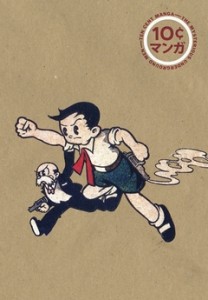 Author: Ivan Morris
Author: Ivan Morris
Publisher: Kurodahan Press
ISBN: 9784902075502
Released: September 2013
Original release: 1975
In some ways, Ivan Morris’ The Nobility of Failure: Tragic Heroes in the History of Japan could be considered a companion of sorts to his earlier work The World of the Shining Prince: Court Life in Ancient Japan. While The World of the Shining Prince explores the beauty of court culture in Japan, The Nobility of Failure addresses the country’s more tragic history. Originally published in 1975, The Nobility of Failure has been out of print for years. Happily, Kurodahan Press was able to rerelease the volume in 2013 with a newly added preface by Juliet Winters Carpenter. Happier still, I was selected to receive a review copy of the new edition of The Nobility of Failure through LibraryThing’s Early Reviewers program. The Nobility of Failure is an important work that examines the cultural and historical background of some of the tragic heroes who continue to influence the modern Japanese psyche. I am very glad that I, and others, once again have the opportunity to read it.
While not unheard of in Western tradition, Japan has a particular, and some might call peculiar, predilection for the tragic or failed hero. They are admired for their sincerity and loyalty even when their causes were meet with failure and their goals could be considered traitorous. Above all else, those heroes adhered to their ideals, especially in the face of their own destruction. In The Nobility of Failure, Morris traces Japan’s tradition of the tragic hero back to the fourth century and the archetype of Prince Yamato Takeru. The following chapters explore the lives and influences of Japan’s legendary and historic failed heroes found throughout the centuries: Yorozu, Arima no Miko, Sugawara no Michizane, Minamoto no Yoshitsune, Kusunoki Masashige, Amakusa Shirō, Ōshio Heihachirō, and Saigō Takamori. The volume culminates in an examination of the World War II kamikaze fighters–an unprecedented development in modern warfare which for most countries would have been unimaginable.
One thing that I didn’t realize about The Nobility of Failure before reading the book was how much of an influence Yukio Mishima had on its creation. Morris and Mishima were friends and the book was at least in part written in order to put Mishima’s act of ritual suicide in 1970 into historical context. The volume is even dedicated to his memory. Since I happen to have a particular fascination with Mishima, I found this connection to be especially interesting. Many of the heroes who are the focus of The Nobility of Failure (tragic heroines are only mentioned in passing) were men that Mishima personally admired, but they are also generally recognized as important to Japan as a whole and are even considered to be inspirational figures to some. Japan’s tragic heroes carry immense psychological and cultural significance; their role in Japanese history was crucial to the development of Japan’s national character, perspective, and worldview.
The Nobility of Failure is an extremely illuminating volume. It’s readily clear that Morris put a tremendous amount of thought and research into the volume. In fact, the endnotes, bibliography, and index make up approximately a third of the books’ length. Morris draws upon both primary and secondary materials, including literature, poetry, and theatrical interpretations of the heroes’ stories found in kabuki and Noh. Using a combination of sources, excerpts, and retellings, Morris reveals both the mythic and legendary basis of Japan’s tragic heroes as well as their historical reality and how they have influenced Japan’s culture and psyche. This is particularly evident in the chapter about the kamikaze fighters in which Morris ties in everything that had previously been examined. Even though The Nobility of Failure was written nearly forty years ago, it is still a valuable and fascinating work. Morris’ compassionate analysis deserves to remain in print.
Thank you to Kurodahan Press for providing a copy of The Nobility of Failure for review.











